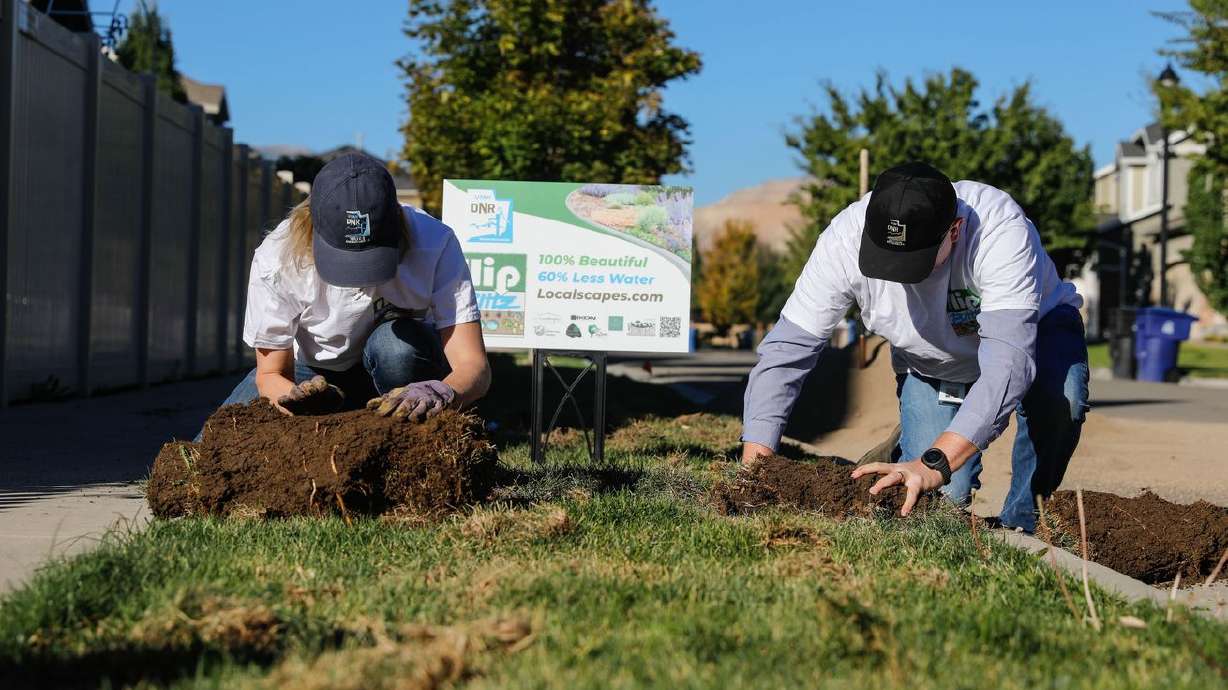Estimated read time: 3-4 minutes
This archived news story is available only for your personal, non-commercial use. Information in the story may be outdated or superseded by additional information. Reading or replaying the story in its archived form does not constitute a republication of the story.
SALT LAKE CITY — Turf requirements on park strips would no longer exist in Utah under a measure endorsed Friday by a legislative committee, which also approved eliminating cities' abilities to restrict water-wise landscaping.
The bill, HB282, sponsored by Rep. Ryan Wilcox, R-Ogden, was unanimously passed in the House Natural Resources, Agriculture and Environment Committee on a 10-0 vote and now will receive consideration in the full House.
"This bill is really simple. What it really says is that we can't issue a prohibition on xeriscaping in the state of Utah," Wilcox said. "As a matter of state policy, if someone wants to do the right thing in the second driest state in the nation, we let them."
Wilcox pointed to the attractiveness of the landscape conservation garden at Weber Basin Water Conservancy District headquartered in Layton. He said he would be upset if he wasn't allowed to do something similar on his own property.
Jon Parry, assistant general manager at the district, said the drought has spurred an uptick of cities' interest in the adoption of water-wise ordinances, and more engagement from the public.
The water savings, he added, could be significant.
"We are seeing a huge need in the realm of outdoor irrigation and reducing that demand overall," he said.
Outdoor irrigation commands upwards of 70% of treated water supplies in the state and leaders are looking for ways to cut back.

Wilcox's bill would restrict cities from requiring turf on more than 35% of one's property. The measure had appeal to some of his colleagues because it allowed flexibility and didn't strictly prohibit turf on someone's property.
Rep. Phil Lyman, R-Blanding, voted for the measure but said there are beneficial purposes of turf — it lowers the ambient temperature — and there are ways to water the lawn more efficiently using a third less water if property owners are committed.
Later on Friday, House Speaker Brad Wilson, R-Kaysville, was joined by Rep. Val Peterson, R- Orem, at a media availability to push the statewide implementation of metering secondary water by 2030.
New connections are already under that mandate, but HB242 would require all connections be metered by 2030.
The legislation, which is in the House, facilitates the state tapping into $257 million of federal relief funds to cover 70% of water provider costs.
It includes a "carrot" of allowing more of that money available to providers the sooner they make the transition.
Both Wilson and Peterson stressed that metering of secondary water is the single most effective step the state can take when it comes to saving water.
Peterson said the timing of the federal relief funding, which allows money to be directed toward water infrastructure needs, coupled with Utah's relentless drought, was an alignment of the stars to get the state on the right track for increased water savings.
"One of the things we want to do is make a generational difference," he said, pointing out that over time, the amount of water that will be saved would fill Jordanelle Reservoir.
Peterson admits there has been some pushback to the bill but said if Utah is to achieve a secure water future, metering of secondary water on 205,000 connections needs to happen sooner rather than later.









